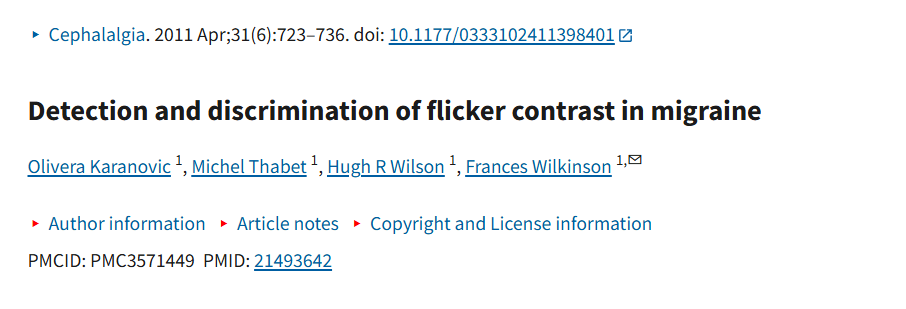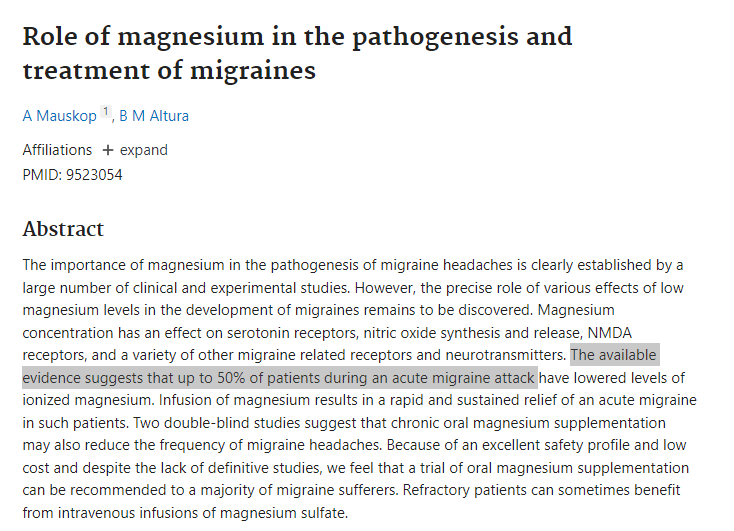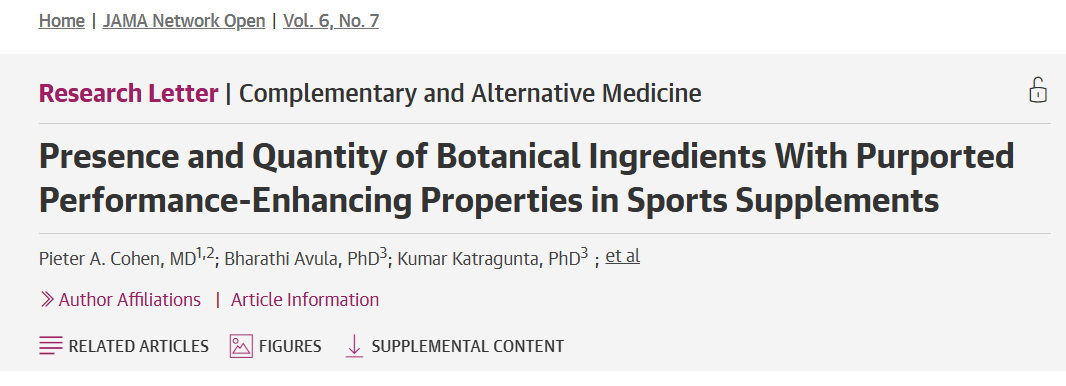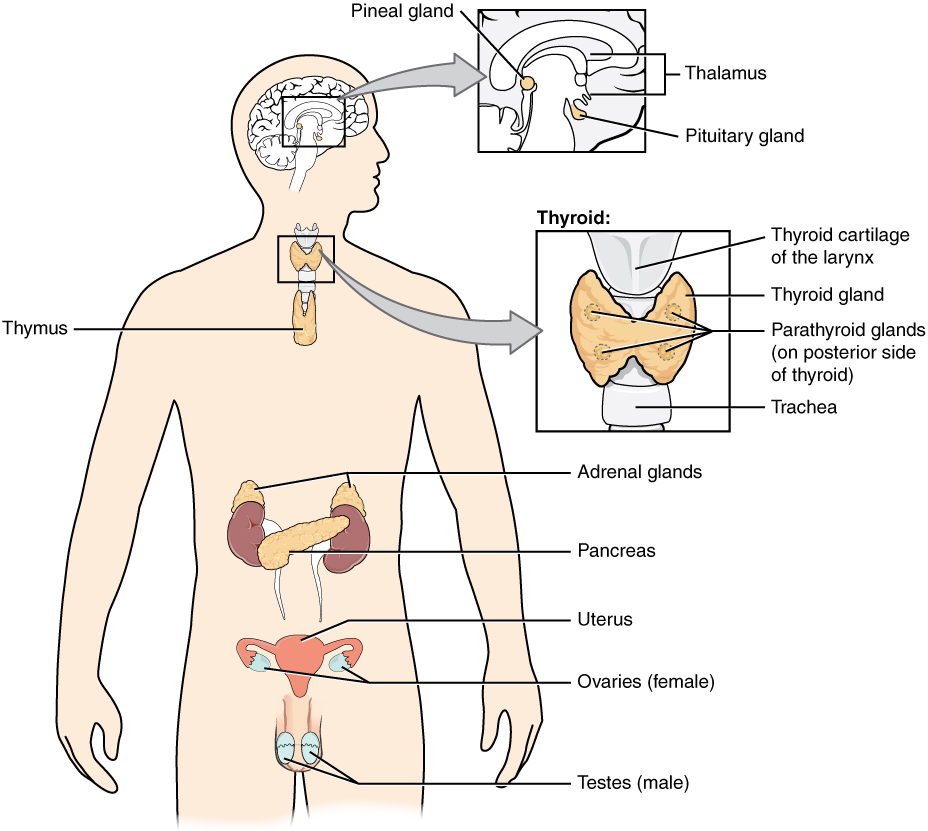If you've been told that there's nothing you can do about your migraines and that it's simply "genetic", you've been lied to.
Here are some things you need to know (underlying causes, safe tools that can help you etc).
Thread 🧵
Here are some things you need to know (underlying causes, safe tools that can help you etc).
Thread 🧵

*Standard disclaimer that nothing in this thread should be used as a substitute for medical advice*
Let's start with the potential causes.
Number 1: Low melatonin levels.
People who suffer from chronic migraines often have low melatonin levels.
pubmed.ncbi.nlm.nih.gov/19817880/
pubmed.ncbi.nlm.nih.gov/18594760/
Now common things (common, not everything) that can cause one's melatonin levels to drop include:
1. Exposure to artificial blue light (especially after sunset) from sources such as LED lights, your laptop, PC, TV etc
2. Shift work
3. Sodium fluoride
4. Chronic stress
5. Medications such as NSAIDs, beta-blockers, some SSRIs 6. Stimulants (caffeine, nicotine etc)
7. Deficiencies in magnesium, zinc, B6, B12, B9, potassium, calcium that directly or indirectly (through methylation or pineal health for example) affect the production of melatonin (magnesium and B6 for example help with the conversion of tryptophan to melatonin)
So for starters, avoid these (get a pair of blue light blockers, get enough of the mentioned nutrients, take a break from stimulants etc).
Let's start with the potential causes.
Number 1: Low melatonin levels.
People who suffer from chronic migraines often have low melatonin levels.
pubmed.ncbi.nlm.nih.gov/19817880/
pubmed.ncbi.nlm.nih.gov/18594760/
Now common things (common, not everything) that can cause one's melatonin levels to drop include:
1. Exposure to artificial blue light (especially after sunset) from sources such as LED lights, your laptop, PC, TV etc
2. Shift work
3. Sodium fluoride
4. Chronic stress
5. Medications such as NSAIDs, beta-blockers, some SSRIs 6. Stimulants (caffeine, nicotine etc)
7. Deficiencies in magnesium, zinc, B6, B12, B9, potassium, calcium that directly or indirectly (through methylation or pineal health for example) affect the production of melatonin (magnesium and B6 for example help with the conversion of tryptophan to melatonin)
So for starters, avoid these (get a pair of blue light blockers, get enough of the mentioned nutrients, take a break from stimulants etc).

Number 2: Flicker maxing through screens.
Simply put, spend less time in front of screens and go outside.
This will also help you with your vitamin D levels since higher circulating vitamin D levels are associated with decreased migraine risk.

Simply put, spend less time in front of screens and go outside.
This will also help you with your vitamin D levels since higher circulating vitamin D levels are associated with decreased migraine risk.


Number 3: Magnesium deficiency.
During a migraine attack, even up to 50% of people have lowered levels of ionized magnesium so do not underestimate the impact that these basic things can have.
During a migraine attack, even up to 50% of people have lowered levels of ionized magnesium so do not underestimate the impact that these basic things can have.

Number 4: Additives found in processed foods such as MSG.
ncbi.nlm.nih.gov/pubmed/7635722
Now of course, the NMDA receptors that are found in the meningeal afferents of the trigeminal nerve are known to be involved in migraines so others things to keep in mind would include:
-Further avoiding the regular consumption of foods that have free-form glutamate such as :
● Monopotassium glutamate
● Wheat gluten
● Maltodextrin
● Modified food starch
● Corn starch and corn syrup
● Barley malt
● Calcium caseinate
● Rice syrup and brown rice syrup
● Xanthan gum
● Pectin
● Carrageenan
● Bouillon
● Citric acid
-In the short run in case you’ve been struggling with an excess, it might be a good idea to also avoid naturally high-glutamate foods such as fermented foods for instance.
-Avoiding the daily usage of stimulants.
-Getting enough magnesium and vitamin B6 (a lack of these two nutrients will lead to a glutamate excess through harming its conversion. The enzyme glutamate decarboxylase that was mentioned prior for example, used B6 as cofactor)
-Consuming enough bioavailable protein. Consuming 1.8 pounds of bioavailable protein per pound of bodyweight which is shown to reduce serum glutamate.
ncbi.nlm.nih.gov/pubmed/7635722
Now of course, the NMDA receptors that are found in the meningeal afferents of the trigeminal nerve are known to be involved in migraines so others things to keep in mind would include:
-Further avoiding the regular consumption of foods that have free-form glutamate such as :
● Monopotassium glutamate
● Wheat gluten
● Maltodextrin
● Modified food starch
● Corn starch and corn syrup
● Barley malt
● Calcium caseinate
● Rice syrup and brown rice syrup
● Xanthan gum
● Pectin
● Carrageenan
● Bouillon
● Citric acid
-In the short run in case you’ve been struggling with an excess, it might be a good idea to also avoid naturally high-glutamate foods such as fermented foods for instance.
-Avoiding the daily usage of stimulants.
-Getting enough magnesium and vitamin B6 (a lack of these two nutrients will lead to a glutamate excess through harming its conversion. The enzyme glutamate decarboxylase that was mentioned prior for example, used B6 as cofactor)
-Consuming enough bioavailable protein. Consuming 1.8 pounds of bioavailable protein per pound of bodyweight which is shown to reduce serum glutamate.
Number 5: nnEMFs.
Now before getting weird, simply start by throwing your airpods away (use wired headphones instead) and don't sleep next to the wifi router.
-Magnesium
-Taurine
-Potassium
-Vitamin K2
-Sunlight for vitamin D
-Thiamine
can help you with intracellular calcium as well.

Now before getting weird, simply start by throwing your airpods away (use wired headphones instead) and don't sleep next to the wifi router.
-Magnesium
-Taurine
-Potassium
-Vitamin K2
-Sunlight for vitamin D
-Thiamine
can help you with intracellular calcium as well.


Number 7: Insulin resistance.
*Anecdotally, plenty of people who get on GLP-1s note that their migraines go away.


*Anecdotally, plenty of people who get on GLP-1s note that their migraines go away.
https://x.com/Helios_Movement/status/1970472975137726928


Number 8: Monitor your O3:06 ratio and get enough vitamin E.
O3s compete with O6s fatty acids for the desaturase and elongase enzymes (delta-6-desaturase, delta-5-desaturase) so getting not only plenty of linoleic acid but also very few O3s, allows more linoleic acid to be converted into AA.
O3s compete with O6s fatty acids for the desaturase and elongase enzymes (delta-6-desaturase, delta-5-desaturase) so getting not only plenty of linoleic acid but also very few O3s, allows more linoleic acid to be converted into AA.

If the issue is menstrual migraines, consider supplementing with whole food vitamin E as well.
pubmed.ncbi.nlm.nih.gov/19114966/
pubmed.ncbi.nlm.nih.gov/19114966/
Moving on to tools you can consider (it's a summary and some were already mentioned):
-CARDIO
-Magnesium acetyl taurate
-B2 + P5P + methylfolate/B12
-Whole food vitamin E
-Green light therapy
-CoQ10
-Trigger point therapy
-Curcumin
-Whole food vitamin C
mdpi.com/2076-3921/9/2/…
ncbi.nlm.nih.gov/pubmed/9484373
pubmed.ncbi.nlm.nih.gov/35786344/
pmc.ncbi.nlm.nih.gov/articles/PMC61…
hms.harvard.edu/news/green-lig…
pubmed.ncbi.nlm.nih.gov/32458156/
-CARDIO
-Magnesium acetyl taurate
-B2 + P5P + methylfolate/B12
-Whole food vitamin E
-Green light therapy
-CoQ10
-Trigger point therapy
-Curcumin
-Whole food vitamin C
mdpi.com/2076-3921/9/2/…
ncbi.nlm.nih.gov/pubmed/9484373
pubmed.ncbi.nlm.nih.gov/35786344/
pmc.ncbi.nlm.nih.gov/articles/PMC61…
hms.harvard.edu/news/green-lig…
pubmed.ncbi.nlm.nih.gov/32458156/
That's all.
P.S: When it comes to serotonin, the main problem is that we do not know if serotonin causes migraines or if migraines cause changes to the serotonin receptors.
It seems that during migraine attacks, ones serotonin levels are low-ish, BUT, at the beginning of an attack, they seem to rise very fast.
Why is this an issue? Because once the sudden rise leads to fast vasoconstriction and once it's starting to break down a fast vasodilation happens (if you have ever quit nicotine, just imagine 10X the headaches during withdrawals).
pubmed.ncbi.nlm.nih.gov/2433045/
So if you are using SSRIs, 5-HTP or tryptophan supplements, consider that these could be triggering the migraines or making them worse.
P.S: When it comes to serotonin, the main problem is that we do not know if serotonin causes migraines or if migraines cause changes to the serotonin receptors.
It seems that during migraine attacks, ones serotonin levels are low-ish, BUT, at the beginning of an attack, they seem to rise very fast.
Why is this an issue? Because once the sudden rise leads to fast vasoconstriction and once it's starting to break down a fast vasodilation happens (if you have ever quit nicotine, just imagine 10X the headaches during withdrawals).
pubmed.ncbi.nlm.nih.gov/2433045/
So if you are using SSRIs, 5-HTP or tryptophan supplements, consider that these could be triggering the migraines or making them worse.

If you enjoyed this thread and found something useful in it, make sure to leave a like/RT.
https://x.com/Helios_Movement/status/1976965646450934210
• • •
Missing some Tweet in this thread? You can try to
force a refresh


















































